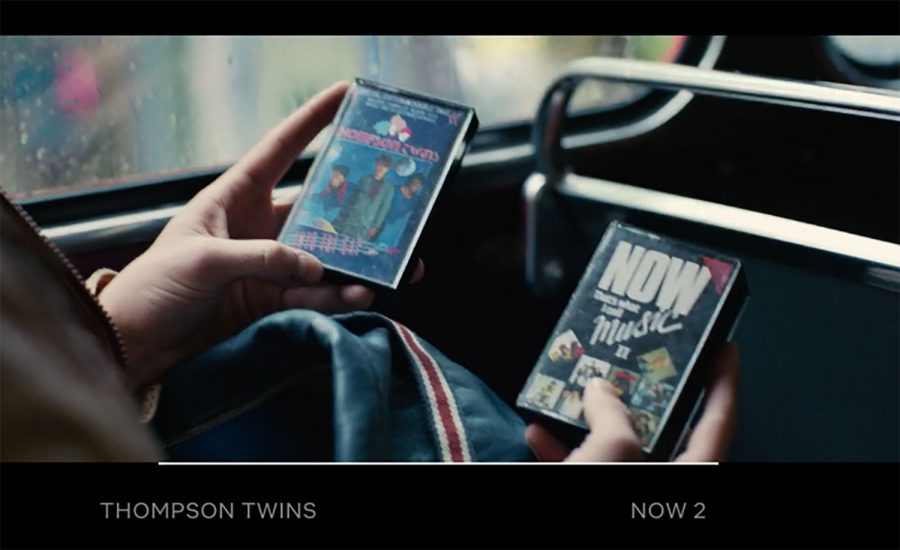Review: ‘Bandersnatch’ snatches viewers’ attention with new user-focused technology
Photo credit: “Bandersnatch” screenshot
Viewers are given the option to choose whether aspiring game designer Stefan listens to “Thompson Twins” or “Now 2.” “Black Mirror: Bandersnatch” provides a unique and interactive viewing experience.
January 28, 2019
It’s 1984: the year of shoulder pads, neon colors, video games and the setting of Netflix’s new film, “Black Mirror: Bandersnatch.”
The film, written by Charlie Brooker and directed by David Slade, follows Stefan Butler (Fionn Whitehead), a British teen who has designed an interactive game called Bandersnatch. Stefan pitches his idea to a big game company, where he meets Colin Ritman (Will Poulter), a successful game designer and his biggest inspiration. What makes the film unique isn’t the plot, though — it’s the viewer’s power to make decisions that alter the course of the movie.
Should Stefan eat Sugar Puffs or Frosted Flakes? Should he listen to the “Thompson Twins” or “Now 2?” These questions are resolved with a single click on the viewer’s part. As the story progresses, options become more dramatic and altering; however, even the small choices matter.
These decisions lead the viewer to one of the show’s five different endings. If the viewer is satisfied with their ending, they can continue onto the credits. If not, the viewer is able to go back and try to discover each and every possible ending to the show. The overall goal of the show is to receive five stars on your game, but you can end the film without receiving five stars.
As the film progresses and Stefan codes his game, he becomes overwhelmed and mentally breaks down. The viewer does have a choice, but only to a certain extent, as some choices lead to dead ends and force the viewer to go back and select a different option. In the process of this, the participant begins to realize they only have control over Stefan to an extent. I take this as Brooker’s commentary on how we may feel like we are in control when there are truly other forces at play.
In a Netflix featurette, Brooker explained that the production of the film was quite challenging, and took a lot of brainpower.
“There were points where, in working stuff out, it got like trying to do a Rubik’s cube in your head,” Brooker said.
The film is effortlessly clever and complex, all while surprising, frustrating and entertaining audiences. As I watched the film, I felt like I had full control over another person’s life, even though this was only a movie with fictional characters. This is, in part, due to Whitehead’s portrayal of Stefan. I truly felt as if Stefan was a real teenager trapped in this game under the viewer’s control, which only adds to the uniqueness of this film.
I don’t know if I would watch the film again, as it became mentally tiring to make so many decisions. However, it is indeed a masterpiece that continuously kept me on my toes. Brooker never fails to push artistic boundaries, evident through the use of this new interactive adventure.
I would recommend this film to any person who is looking for an innovative and unique way to spend a few hours. It’s unlike anything Netflix has put out before, and I hope it is the first of many interactive film experiences.
-
Story
-
Acting
-
Technical Quality
-
Enjoyment
-
Impact








